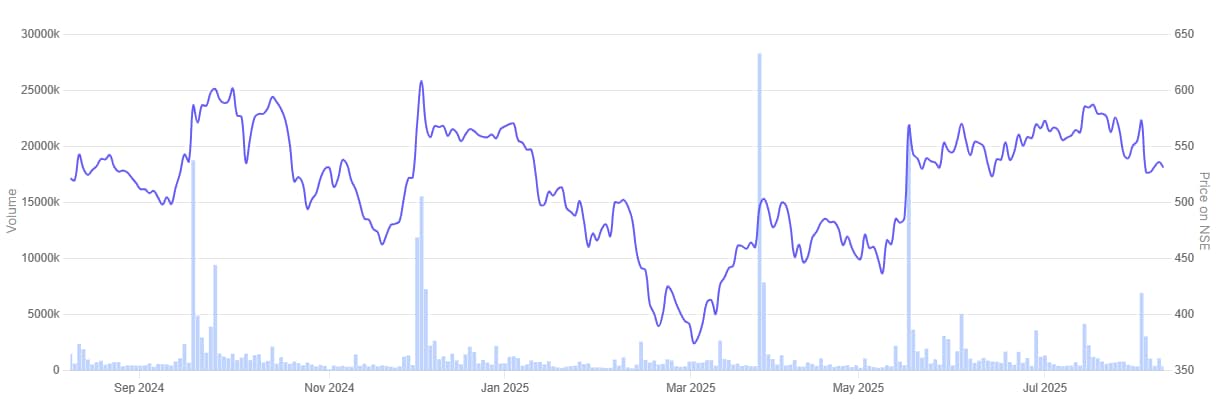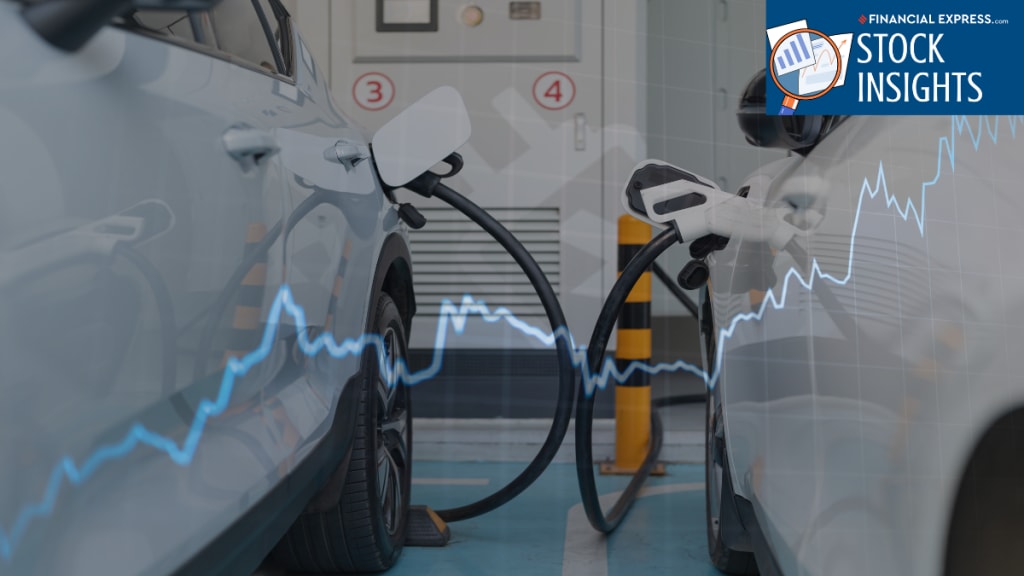India’s electric vehicle (EV) sector is gaining momentum. Inflated fuel prices, government subsidies, and shifting consumer sentiment are driving the transition. But this transition is not merely about producing vehicles. It’s also about creating the materials ecosystem that propels them.
The most essential material in the ecosystem is probably graphite. Graphite, used in battery form, is the key to the anodes in lithium-ion batteries. EVs simply can’t move without it.
Currently, India relies nearly solely on imports for this substance. But a few local firms are starting to venture into this territory. Some have made public declarations. Others are making an early push. If they can pull this off, they can assist India in weaning itself off imports and solidifying the EV supply chain.
In this piece, we focus on listed Indian firms with direct or strategic exposure to battery-grade graphite. In our discussion, we have left out HEG Ltd. Though being one of the global leaders in the production of electrodes, HEG has not indicated that it will venture into battery-grade graphite or EV-related materials. Likewise, Epsilon Carbon has already begun producing battery-grade graphite but is not included in this list as it is not a listed firm.
Since there are only two listed companies involved—Graphite India and Himadri Speciality Chemical—we have decided to research them individually instead of trying to cram them into broad categories. In this article, we take a look at where each of them stands in India’s battery-grade graphite development goals.
#1 Graphite India
Graphite India is mainly engaged in the business of manufacturing and selling of graphite & carbon and other products.
Graphite India is one of the largest manufacturers in the world of graphite electrodes, with 98,000 tonnes per year (TPA) capacity in three units in India and Germany. Its business is predominantly in the steel sector, not EV. It is part of the Adventz group of companies.
To date, the company does not manufacture battery-grade graphite. But it has a 31% ownership in Godi India, which is working on battery cells for EVs. It also has 60%+ in General Graphene Corporation (USA), engaged in large-scale graphene sheet manufacturing. These are strategic holdings—not operating businesses.
Its current capabilities, such as CPC manufacturing and UHP graphite electrodes, enjoy some technical synergy with battery-grade graphite. But no pivot announcement has been made.
It has a capacity expansion of Rs 600 crore (25,000 TPA) in progress, with Rs 100 crore for captive renewable energy. This is to expand its electrode business—not venture into EV battery materials.
Net cash of Rs 4,173 crore (as on 30th June 2025) positions Graphite India financially to diversify. This provides it with considerable leeway to invest in new technologies or grow organically and inorganically.
Graphite India’s overall strategy entails vertical integration, expansion in the market, and value-accretive acquisition. It is also expanding its footprint in value-added graphite products for automotive, aerospace, pharma, chemical, and metallurgical applications.
None of this may assure a direct entry into battery-grade graphite production at this moment, but one could speculate the pieces are being put in place.
Graphite India might not yet be a headline name in India’s EV narrative. But its current capability, financials, and early strategic actions imply it is gearing up for the marathon race.
Graphite India share price is up 1.7% in the last one year.
Graphite India 1 Year Share Price Chart

#2 Himadri Specialty Chemical
Himadri Speciality Chemical is primarily engaged in the manufacturing of carbon materials and chemicals. It is the No.1 coal pitch manufacturer in India and is the only company to manufacture advanced carbon material in India. It is also the largest player of Naphthalene and SNF in India.
Battery anode materials are critical to lithium-ion batteries and are generally prepared from graphite — natural, synthetic, or hybrid. Himadri Speciality Chemical is emerging as a significant anode material player by riding on its coal tar derivative experience and backward integration.
The firm is already manufacturing Coal Tar Pitch (CTP), a key feedstock for graphite anodes. It is one of the few in the world to have backward integration for the product. Himadri has established technology to produce anode precursors and is currently in the process of natural, synthetic, hybrid, and silicon-based anodes.
It has collaborated with Sicona Battery Technologies to introduce SiCx silicon-carbon anode technology to India. SiCx has more than 20% higher energy density and 40% charging speed compared to traditional graphite.
Himadri also plans to increase speciality carbon black capacity to 1,30,000 MTPA at a cost of Rs 220 crore. Although not pure graphite, certain grades are aimed at battery use.
Its anode roadmap aligns with its large-scale LFP cathode material project (2,00,000 MTPA) and partnerships with battery cell makers like IBC, which is using Himadri’s anode and cathode materials in its Prabal 2000 cell.
Himadri is exploring with battery original equipment manufacturers (OEMs) for product testing and is also involved with a battery recycling program, reclaiming critical materials such as graphite. Anode material demand is projected to reach 8 million tonnes by 2030, and Himadri is developing capacity and technology to address this boom.
With a robust emphasis on graphite-based anodes, vertical integration, and worldwide collaboration, Himadri is strategically and opportune entering India’s battery material sector.
In the past one year, its share price slipped 3.5%
Himadri Specialty Chemical 1 Year Share Price Chart

Conclusion
India’s path to self-sufficiency in battery-grade graphite is still in its infancy. Although neither Graphite India nor Himadri Speciality Chemical makes significant revenues in this segment as yet, both are silently building foundations in their own ways.
Graphite India, with a solid balance sheet and wise investments, can step into the battery-grade graphite opportunity, if it wishes to, with its financial and technical overlap. Himadri, however, is ahead of the curve—already working on anode materials, making alliances, and mapping its roadmap to the global trends in batteries.Interestingly, even though the EV battery opportunity is exciting, the one year stock price returns of both companies have not delivered anything spectacular. Infact, one could even say the returns are sub par. Only time will tell whether the market is missing this potential opportunity, or is it skeptical of these companies making the most of it.
That aside, battery-grade graphite is only one part of the investment equation. Investors might do well to watch for any definitive announcements or operational shifts in this area. But these should be taken into consideration alongside other pivotal factors—such as valuations, cash flows, capital allocation discipline, and sectoral headwinds.
In short, the EV transition is a thrilling long-term proposition, yet any investment choice in the sector must be supported by thorough analysis, not mere headline promise.
Disclaimer
Note: We have relied on data from www.Screener.in throughout this article. Only in cases where the data was not available, have we used an alternate, but widely used and accepted source of information.
The purpose of this article is only to share interesting charts, data points and thought-provoking opinions. It is NOT a recommendation. If you wish to consider an investment, you are strongly advised to consult your advisor. This article is strictly for educative purposes only.
Ekta Sonecha Desai has a passion for writing and a deep interest in the equity markets. Combined with an analytical approach, she likes to dig deep into the world of companies, studying their performance, and uncovering insights that bring value to her readers.
Disclosure: The writer and her dependents do not hold the stocks discussed in this article.
The website managers, its employee(s), and contributors/writers/authors of articles have or may have an outstanding buy or sell position or holding in the securities, options on securities or other related investments of issuers and/or companies discussed therein. The content of the articles and the interpretation of data are solely the personal views of the contributors/ writers/authors. Investors must make their own investment decisions based on their specific objectives, resources and only after consulting such independent advisors as may be necessary.

